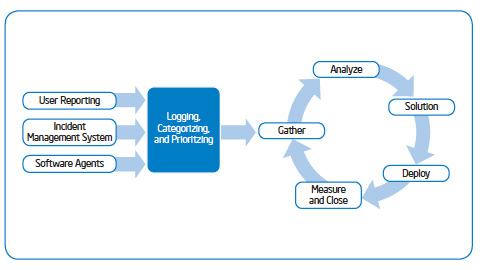IT Best Practices: Improving Client Stability with Proactive Problem Management

IT Best Practices: Intel IT implemented a proactive problem management process based on analysis of objective, largely system-generated data from client PCs across our worldwide environment. Using this approach, we have increased client stability by reducing the number of blue screen system crashes by more than 50 percent, and we are beginning to realize benefits in other areas including application crashes. Our data analysis enables us to identify users who are experiencing the most problems, even when they have not reported them; we proactively approach them and offer to fix their problems. Users have responded very positively to this. We are addressing other areas, including monitoring hard drives to detect problems before catastrophic failure; this helps us avoid the loss of data, increases employee productivity, and saves money because hard drives that are still under warranty are replaced at no cost to Intel.
For more on IT Best Practices, visit IT@Intel
For more information on Intel IT Best Practices, please visit intel.com/IT
Posted in:
Information Technology, Intel, Intel IT, IT White Papers, IT@Intel

